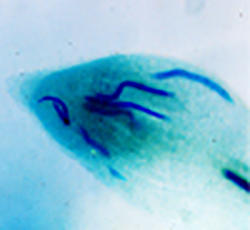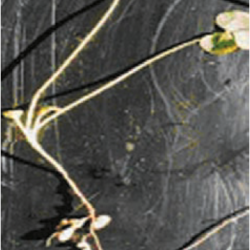Clover root nematode
Clover root nematodes are soil inhabiting micro-organisms which are present throughout New Zealand. Clover root nematodes are regarded as one of the most economically damaging pasture pests, reducing pasture production by around 15% annually. There are three main species of nematodes that feed on clover plants in New Zealand:
- Clover-cyst nematode (Heterodera trifloii)
- Root-knot nematode (Meloidogyne spp)
- Lesion nematode (Pratylenchus spp)
The clover-cyst and lesion nematodes are present throughout New Zealand, while the root-knot nematode is absent from southern regions of the South Island. Nematode populations peak in spring and autumn, the periods when the majority of pasture seed is sown. When nematode burdens are reduced in established or newly sown pasture, the presence of clover in the sward is generally much higher during periods of active growth.
Life cycle
Nematodes pass through an embryonic stage, four juvenile stages and an adult stage. The length of the lifecycle is temperature dependent. Egg hatch and root penetration by juveniles can occur at temperatures as low as 10 degrees celcius.
Feeding
Clover root nematodes attack root systems of newly sown and established clover plants. Clover seedlings are most at risk from attack during early plant development. Invasion of young root systems and subsequent feeding reduces root bio-mass and therefore restricts the ability of the clover plant to take up water, nutrients and fix nitrogen, reducing pasture production. Feeding damage on young clover plants may be characterised by dwarfing, discolouration, wilting and plant death. Infection of mature clover plants tends to reduce plant growth.
Protection and control
- Superstrike clover seed treatment for protection during plant establishment.
- Continuous cultivation over a number of years.
For more information visit the Ag Pest website.




